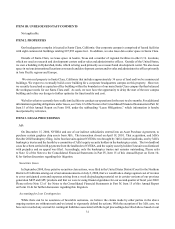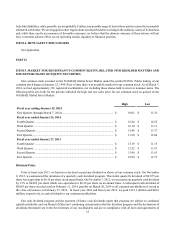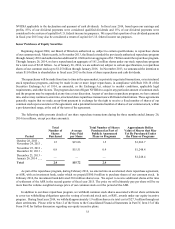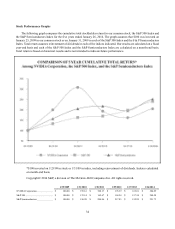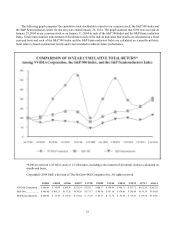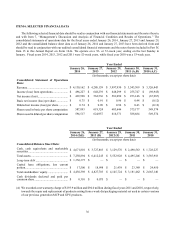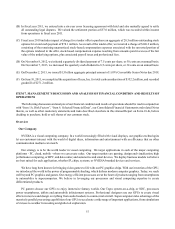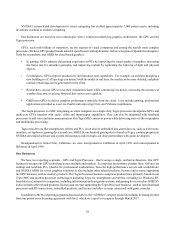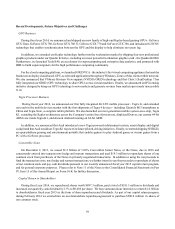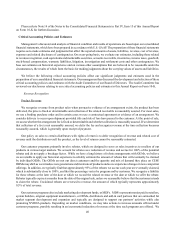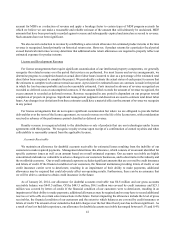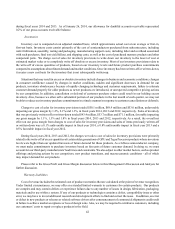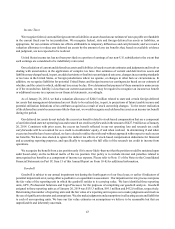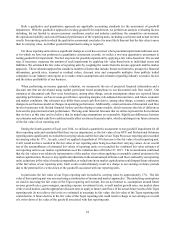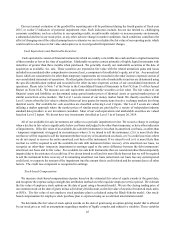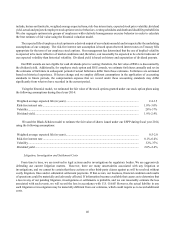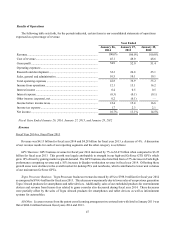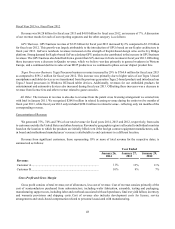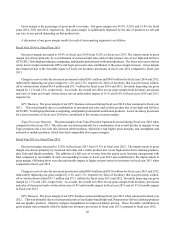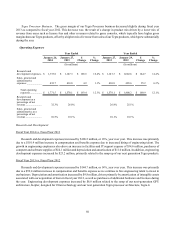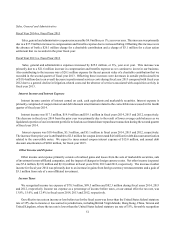NVIDIA 2013 Annual Report Download - page 185
Download and view the complete annual report
Please find page 185 of the 2013 NVIDIA annual report below. You can navigate through the pages in the report by either clicking on the pages listed below, or by using the keyword search tool below to find specific information within the annual report.
41
account for MDFs as a reduction of revenue and apply a breakage factor to certain types of MDF program accruals for
which we believe we can make a reasonable and reliable estimate of the amount that will ultimately be unclaimed. MDF
amounts that have been previously recorded against revenue and subsequently expired unclaimed are reversed to revenue.
Such amounts have not been significant.
We also record a reduction to revenue by establishing a sales return allowance for estimated product returns at the time
revenue is recognized, based primarily on historical return rates. However, if product returns for a particular fiscal period
exceed historical return rates we may determine that additional sales return allowances are required to properly reflect our
estimated exposure for product returns.
License and Development Revenue
For license arrangements that require significant customization of our intellectual property components, we generally
recognize the related revenue over the period that services are performed. For most license and service arrangements, we
determine progress to completion based on actual direct labor hours incurred to date as a percentage of the estimated total
direct labor hours required to complete the project. We periodically evaluate the actual status of each project to ensure that
the estimates to complete each contract remain accurate. A provision for estimated losses on contracts is made in the period
in which the loss becomes probable and can be reasonably estimated. Costs incurred in advance of revenue recognized are
recorded as deferred costs on uncompleted contracts. If the amount billed exceeds the amount of revenue recognized, the
excess amount is recorded as deferred revenue. Revenue recognized in any period is dependent on our progress toward
completion of projects in progress. Significant management judgment and discretion are used to estimate total direct labor
hours. Any changes in or deviations from these estimates could have a material effect on the amount of revenue we recognize
in any period.
For license arrangements that do not require significant customization but where we are obligated to provide further
deliverables over the term of the license agreement, we record revenue over the life of the license term, with consideration
received in advance of the performance period classified as deferred revenue.
Royalty revenue is recognized related to the distribution or sale of products that use our technologies under license
agreements with third parties. We recognize royalty revenue upon receipt of a confirmation of earned royalties and when
collectability is reasonably assured from the applicable licensee.
Accounts Receivable
We maintain an allowance for doubtful accounts receivable for estimated losses resulting from the inability of our
customers to make required payments. Management determines this allowance, which consists of an amount identified for
specific customer issues as well as an amount based on overall estimated exposure. Our accounts receivable are highly
concentrated and make us vulnerable to adverse changes in our customers businesses, and to downturns in the industry and
the worldwide economy. Our overall estimated exposure excludes significant amounts that are covered by credit insurance
and letters of credit. If the financial condition of our customers, the financial institutions providing letters of credit, or our
credit insurance carrier were to deteriorate, resulting in an impairment of their ability to make payments, additional
allowances may be required that could adversely affect our operating results. Furthermore, there can be no assurance that
we will be able to continue to obtain credit insurance in the future.
As of January 26, 2014, our allowance for doubtful accounts receivable was $0.8 million and our gross accounts
receivable balance was $443.5 million. Of the $443.5 million, $84.1 million was covered by credit insurance and $23.1
million was covered by letters of credit. If the financial condition of our customers were to deteriorate, resulting in an
impairment of their ability to make payments, additional allowances may be required and we may have to record additional
reserves or write-offs on certain sales transactions in the future. Factors impacting the allowance include the level of gross
receivables, the financial condition of our customers and the extent to which balances are covered by credit insurance or
letters of credit. The amount of our cumulative bad debt charges over the last three fiscal years has not been significant. As
a result of our low bad debt experience, our allowance for doubtful accounts receivable has ranged between 0.1% and 0.4%


